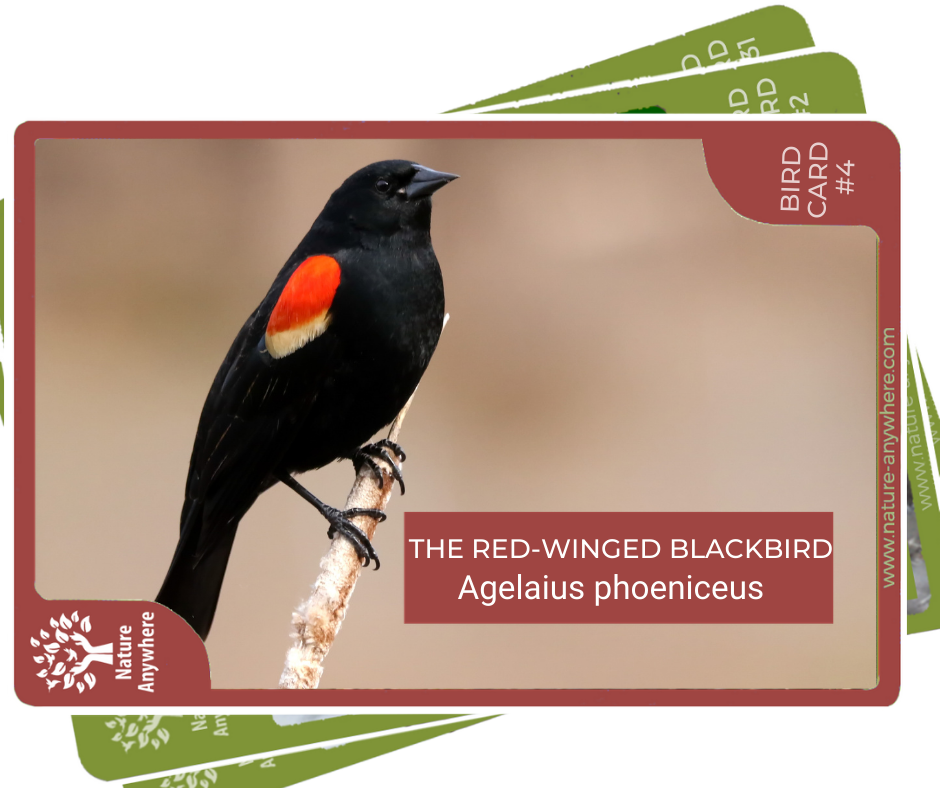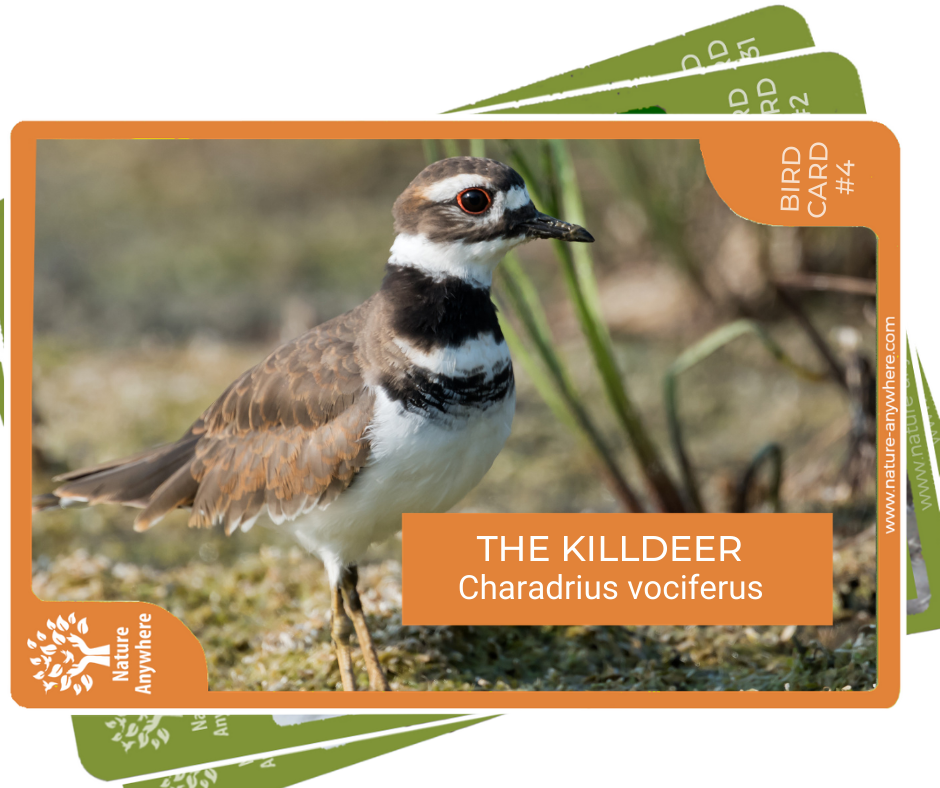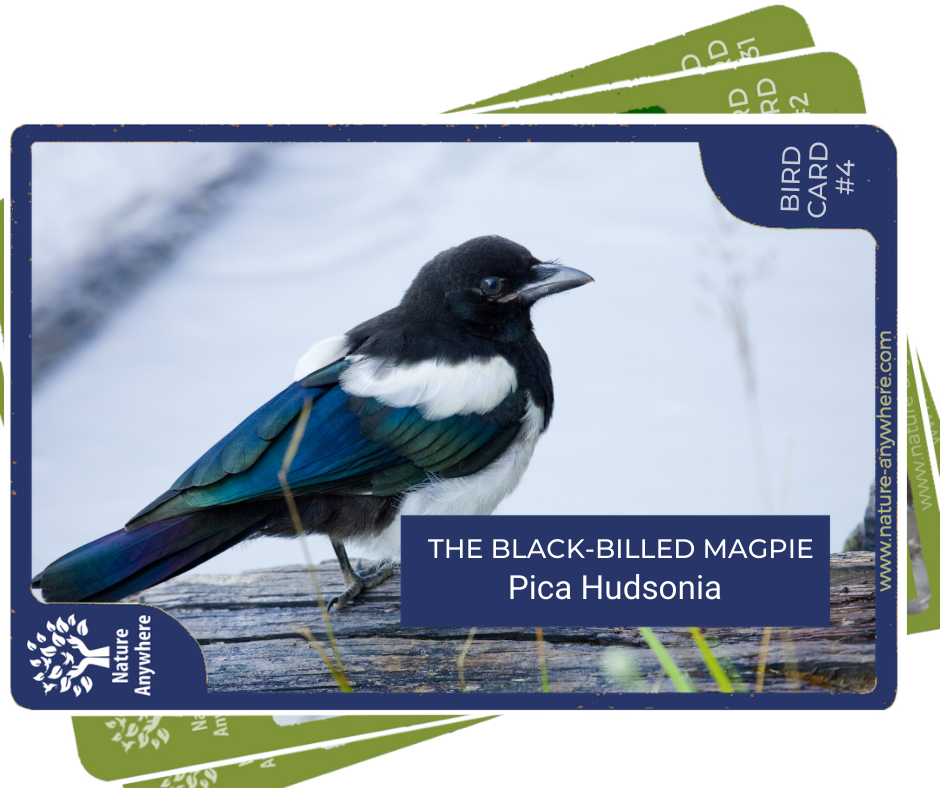
Birdwatchers across North America feel a lift of the heart at the first sight of the red-winged blackbird because it means … spring is here!
Flying up from Mexico and the Southern parts of the United States, they fly from coast to coast across the northern country, looking for breeding territories.
Red-winged blackbirds are everywhere at this time of the year, flying around with their nasal chirps, looking for a safe spot to build a nest in marshes, wet fields, meadows and sometimes at the edge of ponds. Basically they like a lot of water around them.
The males make no mystery of their appearance, sometimes perching high atop a telephone wire. Females are much harder to see as they tend to stay closer to the ground, camouflaged by the vegetation.
In the fall, when not in breeding season, these highly social birds roost with large flocks of up to 1000, which can include starlings, grackles, cowbirds and blackbirds. They feed by night.
LOOKS
This stocky, broad-shouldered bird is about 7 to 9 1/2 inches in length and weighs on average 1.5 oz. The male has a glossy, jet-black body and patches of scarlet-warm red and yellow flame colors hidden in the wings.
The jet-black male flaunts the flame coloured patches on his wings called epaulettes when singing, showing off or defending his territory. He fluffs up his feathers, holds his wings slightly away from his body, lowers his head and lifts his shoulders to show them off to their full advantage.

These epaulettes are crucial for survival. Red-winged blackbirds guard their territories fiercely and are not to be trifled with. They display their red shoulders and vocally make it clear to all who’s the boss!
If a bigger bird approaches the nest such as a hawk or crow, he will attack him boldly. Males will even attack horses and humans. But most of the time, when wanting to be inconspicuous, the flames will stay hidden, tucked away in the black feathers.
You wouldn’t recognise the female because she looks entirely different to her male counterpart. Females look like large dark-brown sparrows with dark brown streaks, a sharp pointy bill and buffed, white eyebrows.

Male juveniles look similar to adult females but are slightly darker with an orange shoulder patch bordered by white. They reach their full crimson plumage when they are 2 or 3 years old. Female juveniles look more like adult females.
The oldest banded red-winged blackbird reached the ripe old age of 15 years and 9 months. In the wild, red-winged blackbirds live for an average of 2 years.
EATS
During the summer, especially when breeding, insects are the main item on their menu including beetles, caterpillars, grasshoppers, spiders, millipedes and snails. From spring to autumn, adults thrive on the seeds of grasses, weeds and grains. They also eat berries and small fruits.
Red-wing blackbirds use the gaping technique. They push their closed bill into the base of a grass clump and force it open with their strong muscles in order to discover the insects that may be hiding there.
BIRDFEEDERS
During the migration period, red-winged blackbirds can fly great distances - up to 800 miles. This uses a lot of energy so by the time they reach their final destination, they are completely exhausted. Offering them food could be a real life-saver.
Red-winged blackbirds may come to your yard for mixed grains and seeds, particularly during migration. Spread grain or seed on the ground as well, since this is where they prefer to feed. Cracked corn, millet or even oats in your yard can attract these black beauties. Offer also black oil sunflower seeds and hulled sunflower seeds together with corn and peanut hearts.
I recommend platform feeders, hopper and tray feeders to give them enough space to peck away freely without feeling crowded.
SOUND
The male’s easily recognisable song consists of three notes, with the last note terminating in a high trill: oak-a-lee. When the males get territorial their tone changes into chastising, warning the intruders with a harsh chuck or chack, which at the same time is also their alarm call.
FLAMING-RED LOVE
The more mature adult red-winged blackbirds arrive in spring to stake their claim and defend their territory against other males, especially the younger ones. These young males will get the hint and will gather in “bachelor flocks” to try again the following year.

Red-wing blackbirds are one of most polygynous birds, meaning that males have many female mates, and can breed with up to 15 females per season. The breeding season starts around February and lasts until August, but takes place mainly during the warm months of May to July.
When the male spots a female, he fluffs his plumage, raises his shoulders to display his “flaming epaulettes,” and spreads his tail as he chirps her way. The more enthusiastic he gets, the more the wings arch. This tactic is also used to defend his territory. The female will choose the male with the reddest wings and respond to his wooing with a song and dance of her own. Those with black wings just don’t stand a chance!
The female builds her nest in the marsh, lashed to a reed or in a small bush, usually among trees and grassy vegetation. Female red-winged blackbirds build their nest in four stages. Initially they weave together several supporting pieces of vegetation, and then weave the walls of the nest onto these supports. The nest cup is then lined with mud, and the final step is to line it with a layer of fine grasses.

Both male and female defend the nest against predators.
The female lays 2-5 pale blue-gray eggs marked with zigzag lines of brown or black. She incubates them for about 12-14 days. 10-14 days after, the hatchlings will leave the nest. The chicks will be dependent on their parents for nutrition for up to 5 weeks after they leave the nest.
FUN FACTS
- A group of blackbirds is called a cloud, cluster or merle of blackbirds.
- Red-wing blackbirds increase their feeding rate to match the other blackbirds around them, even if they are already well fed. They can also learn which new foods they can eat by carefully observing what other blackbirds are eating.
- Males birds can spend up to two thirds of daylight time defending their territory.




1 comment
Stacy walker
They are such sweet sounding beautiful birds. I had one follow me this past week . He flew right beside me for about 500 ft or more and it kept flying out over me and looping back he did it 3 or 4 times then he would chirp over and over. He was so beautiful.
Leave a comment
All comments are moderated before being published.
This site is protected by hCaptcha and the hCaptcha Privacy Policy and Terms of Service apply.